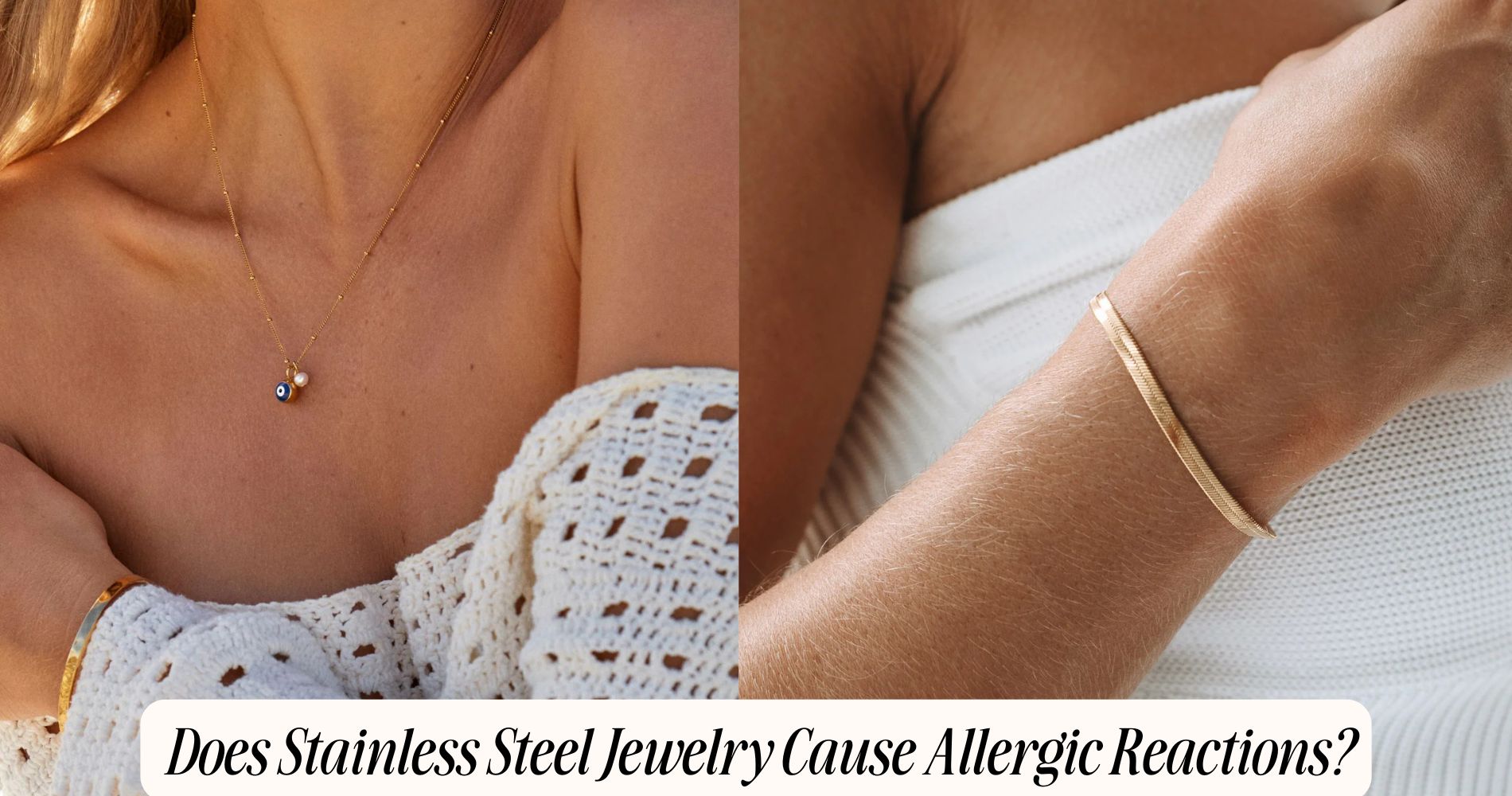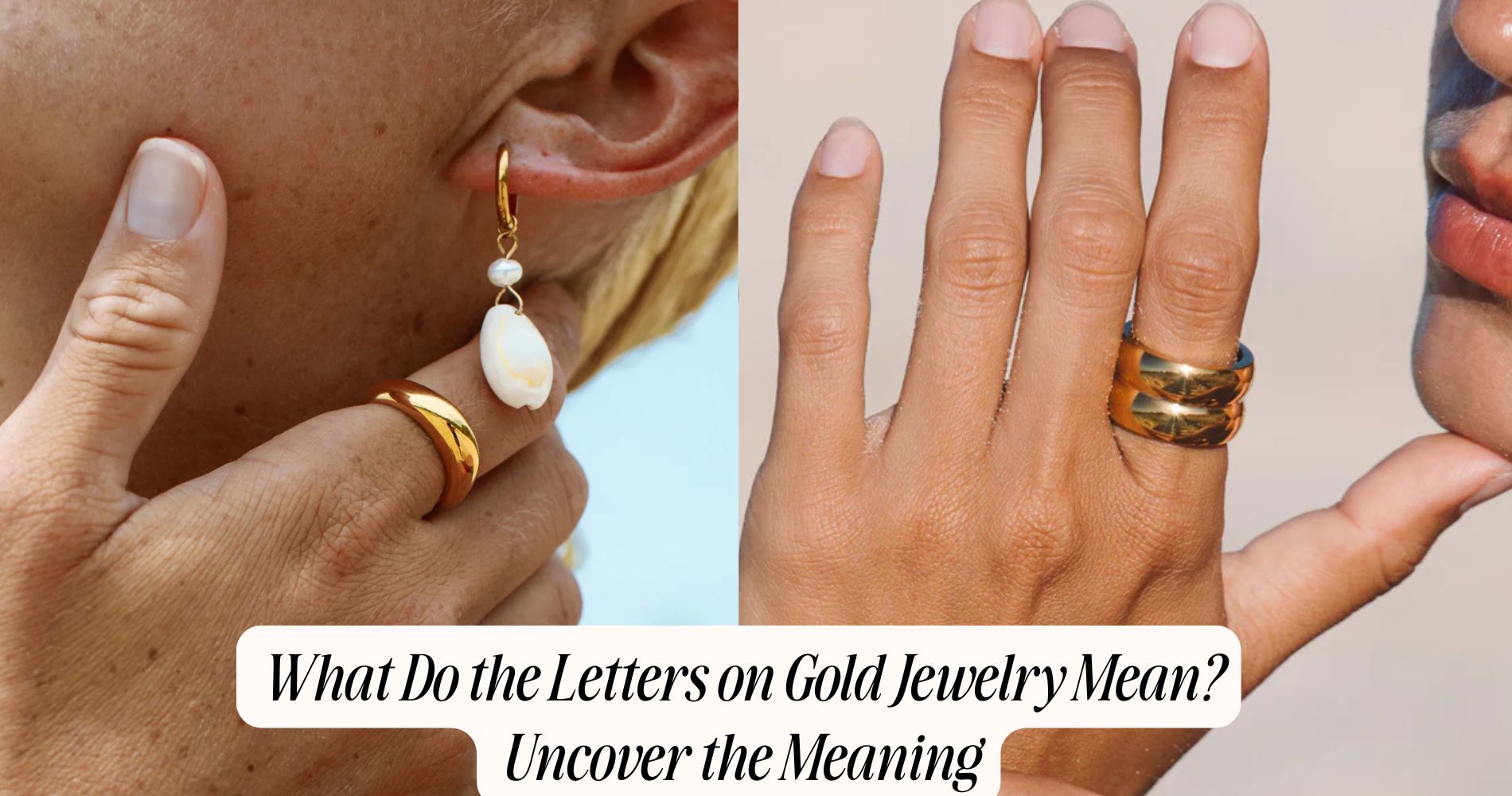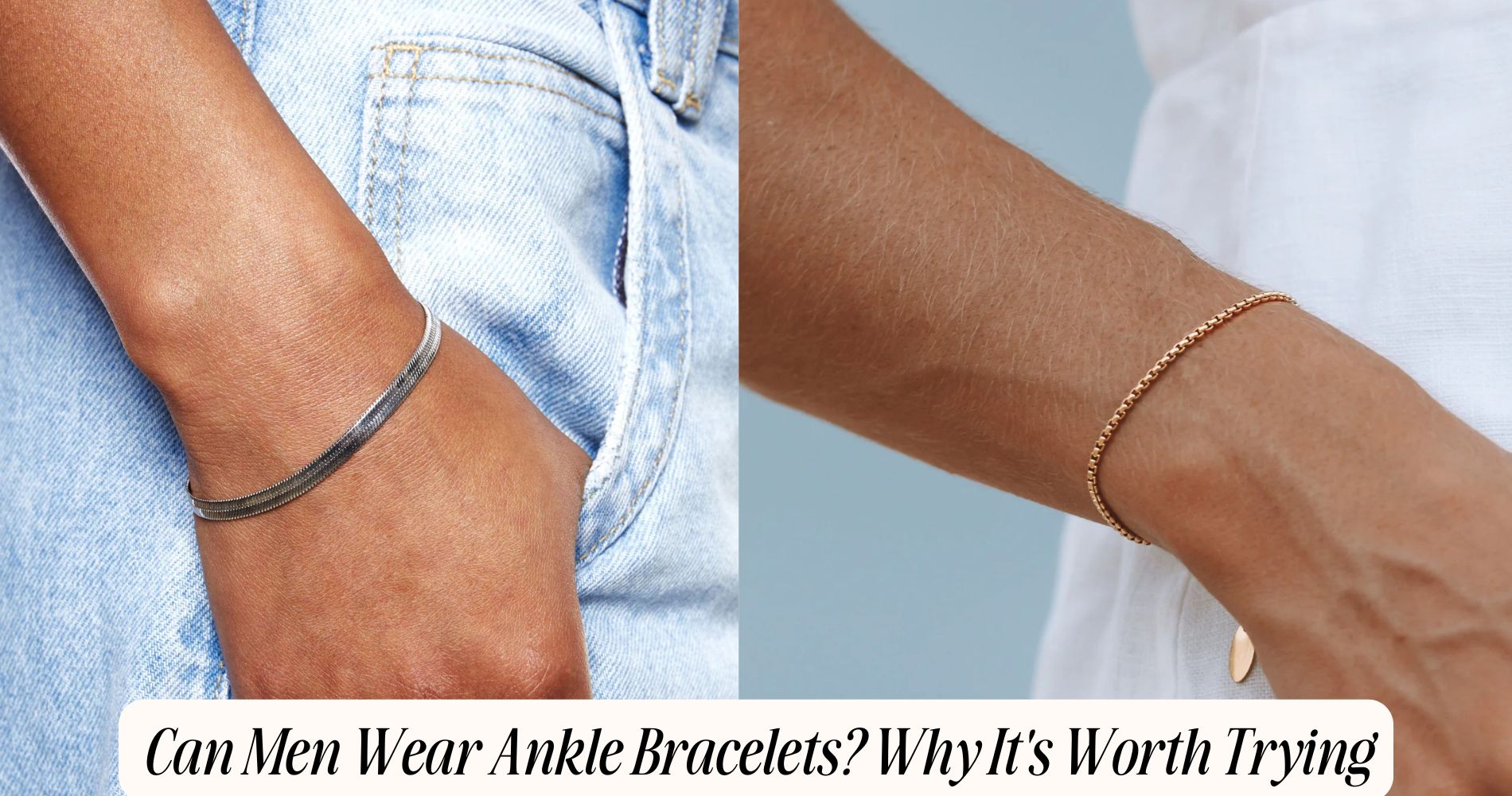
Does Stainless Steel Jewelry Cause Allergic Reactions?
Does stainless steel jewelry cause allergic reactions? While stainless steel jewelry is celebrated for its durability and style, it can trigger allergic reactions in some individuals, primarily due to its nickel content. If you have sensitive skin, you might notice redness, itching, or swelling after wearing certain stainless steel pieces. However, not all stainless steel is the same—opting for high-quality, hypoallergenic grades, can significantly reduce the risk of irritation. Monitoring your skin's response and choosing nickel-free options is key if you're prone to allergies. Explore our stainless steel jewelry collection for elegant, nickel-free designs crafted with sensitive skin in mind.
Understanding Stainless Steel Composition
When you explore the world of stainless steel jewelry, understanding its composition is essential to enjoying your accessories without worry. Stainless steel is primarily an alloy made of iron, chromium, and nickel, which gives it remarkable stainless steel properties. The chromium content forms a protective layer that prevents corrosion and rust, ensuring your jewelry maintains its shine over time.
You'll appreciate the metal durability that stainless steel offers, making it an ideal choice for everyday wear. Unlike other materials that may tarnish or break, stainless steel stands up to the rigors of daily life, resisting scratches and impacts.
It's lightweight yet strong, so you can flaunt your favorite pieces without fear of damage. Moreover, stainless steel is often hypoallergenic, meaning it's less likely to irritate your skin compared to other metals.
This composition allows you to enjoy your jewelry with confidence, knowing it's designed to last and look great. By understanding these properties, you'll make informed choices about your accessories and enjoy them for years to come.
Common Allergens in Jewelry
It's frustrating to find out that a beautiful piece of jewelry causes an allergic reaction, but understanding common allergens in jewelry can help you avoid such disappointments.
One of the most prevalent culprits is nickel, which is often used in various metal alloys. If you have nickel sensitivity, even the slightest exposure can lead to itchy rashes, redness, and swelling.
Another common allergen is copper, frequently found in costume jewelry. While it adds a lovely hue, it can also cause skin discoloration and irritation.
Additionally, some people are sensitive to brass, a mixture of copper and zinc, which can trigger similar reactions.
Even gold and silver can cause issues if they're not pure. Many gold pieces contain alloys that might include nickel or other irritants, while silver often has copper content that can provoke metal allergies.
To avoid these reactions, look for hypoallergenic options like surgical stainless steel or titanium.
Always check labels and inquire about the materials used in your jewelry. By doing so, you can enjoy your accessories without the worry of allergic reactions.
Types of Stainless Steel Used
Many people may not realize that stainless steel isn't just one single type of metal; it comes in various grades, each with distinct properties suited for different applications, including jewelry. The two most common types you'll encounter are austenitic stainless steel and ferritic stainless steel.
Austenitic stainless steel, known for its high corrosion resistance and excellent durability, is often the go-to choice for jewelry. This type typically contains nickel, which enhances its formability and resistance to rust. You'll find that many high-quality stainless steel pieces, such as rings and bracelets, are made from this grade, making it a popular option for those seeking longevity in their accessories.
On the other hand, ferritic stainless steel is generally more affordable and contains little to no nickel. While it offers decent resistance to corrosion, it isn't as malleable as austenitic stainless. This type is often used in less expensive jewelry and can be more prone to tarnish over time.
Symptoms of Allergic Reactions
Even with the appealing look and durability of stainless steel jewelry, allergic reactions can still occur, particularly due to the presence of nickel in austenitic stainless steel.
When you wear jewelry containing nickel, your skin might react in various ways. You could notice redness around the area in contact with the metal, which is often the first sign of skin irritation. This irritation can escalate into more severe symptoms, such as itching or swelling.
If you're particularly sensitive, you may develop allergic dermatitis, a more intense reaction that can cause blistering or oozing in extreme cases. This condition can be uncomfortable and may even lead you to avoid wearing jewelry altogether.
You might find that the irritation surfaces after just a few hours of wear, showing how quickly your body can respond to allergens.
To prevent these symptoms, keep an eye on how your skin reacts when you wear stainless steel pieces. If you notice any discomfort, it's wise to remove the jewelry promptly and consult a healthcare professional if the symptoms persist.
Knowing the signs of an allergic reaction helps you enjoy your jewelry without unnecessary worry.
Testing for Allergic Reactions
How can you determine if stainless steel jewelry is causing an allergic reaction? The first step is to observe your body's response after wearing the jewelry. If you notice redness, itching, or swelling, it might be time to investigate further.
Consulting a dermatologist is a wise move; they can guide you through the process of patch testing. This test involves placing small amounts of various metals on your skin to see if any cause a reaction, pinpointing metal sensitivity.
During patch testing, you'll wear the metal samples on your skin for 48 hours. After this period, the dermatologist will check for any signs of irritation. If your skin reacts to stainless steel, it could indicate an allergy, often linked to nickel content in the alloy.
Keep in mind that reactions can vary from person to person, so don't jump to conclusions without proper testing. If you suspect stainless steel is the culprit, tracking when reactions occur can provide valuable insights.
Choosing Hypoallergenic Jewelry
If you've identified that stainless steel jewelry might be causing allergic reactions, it's time to explore hypoallergenic options. Choosing the right jewelry materials can make a world of difference when it comes to comfort and style.
Look for pieces made from pure titanium, surgical-grade stainless steel, or niobium, as these materials are less likely to trigger allergic responses.
Another excellent choice is platinum, known for its durability and hypoallergenic properties. If you're drawn to the classic appeal of gold, opt for 14k or higher gold alloys, which have a lower nickel content.
You can also consider sterling silver, but make sure it's labeled as hypoallergenic or nickel-free to avoid any reactions.
Don't overlook the beauty of jewelry made from natural stones, wood, or silicone; these can be stunning alternatives.
When shopping, always check product descriptions for hypoallergenic claims and steer clear of items with vague material listings.
Your skin deserves the best, and with the right knowledge, you can find beautiful hypoallergenic options that keep your style intact while ensuring comfort.
Care Tips for Stainless Steel Jewelry
To keep your stainless steel jewelry looking its best, regular cleaning is essential.
Gently wipe it down with a soft cloth to remove dirt and oils, and steer clear of harsh chemicals that could dull its shine.
Regular Cleaning Practices
Keeping your stainless steel jewelry sparkling and free from tarnish is as simple as incorporating a few regular cleaning practices into your routine. Aim for a cleaning frequency of every few weeks to keep your pieces looking their best. This regular attention prevents buildup and maintains that shiny brilliance you love.
To get started, gather a few maintenance tools: a soft, lint-free cloth, mild soap, and warm water. When you're ready to clean, mix a couple of drops of mild soap in warm water. Dip the cloth into the soapy solution, wring it out, and gently wipe your jewelry, focusing on any crevices where dirt might accumulate.
Rinse with clean, lukewarm water and dry thoroughly with another soft cloth to avoid water spots. For tougher grime, consider using a soft-bristled toothbrush to gently scrub those hard-to-reach areas. Just remember to be gentle to avoid scratching the surface.
Avoiding Harsh Chemicals
Regular cleaning helps maintain the allure of your stainless steel jewelry, but the products you use can greatly impact its longevity and your skin's health. To keep your pieces looking their best, avoid harsh chemicals that can cause damage and increase your risk of skin sensitivity.
Many common household cleaners contain strong ingredients that can lead to chemical exposure, which may not only dull the shine of your jewelry but also irritate your skin.
Instead, opt for gentle cleaning solutions. A mixture of warm water and mild soap works wonders. Soak your jewelry for a few minutes, then use a soft cloth or a toothbrush with soft bristles to remove dirt and grime. Rinse thoroughly to eliminate any soap residue, which can also trigger skin reactions.
Additionally, be cautious with products like perfumes, lotions, and hairsprays. These can interact with your jewelry, causing tarnishing and potential allergic reactions.
Frequently Asked Questions
How Does Stainless Steel Compare to Other Metals for Sensitive Skin?
When comparing stainless steel to other metals, you'll find its low nickel content makes it less likely to trigger metal allergies. This quality often makes it a safer choice for those with sensitive skin.
Can I Wear Stainless Steel Jewelry in Water Without Reactions?
You can wear stainless steel jewelry in water, but frequent exposure may affect its shine. For best jewelry care, rinse and dry your pieces after water exposure to maintain their luster and prevent tarnishing.
What Should I Do if I Suspect an Allergic Reaction?
If you suspect an allergic reaction, stop wearing the item immediately. Cleanse your skin gently, apply a soothing cream, and keep an eye on symptoms. Consult a dermatologist for effective allergy management and personalized skin care advice.
Conclusion
In summary, stainless steel jewelry is generally safe and often hypoallergenic, but it's essential to know the specifics of its composition. If you experience irritation or allergic reactions, consider the type of stainless steel used and consult with a professional. Opting for high-quality, hypoallergenic pieces can help you enjoy your accessories without worry. With proper care, your stainless steel jewelry can shine brightly and remain a cherished part of your collection for years to come.
























Leave a comment
This site is protected by hCaptcha and the hCaptcha Privacy Policy and Terms of Service apply.